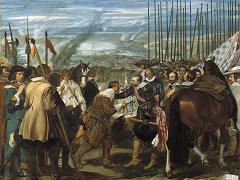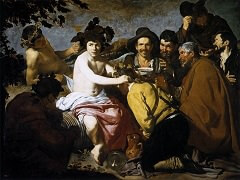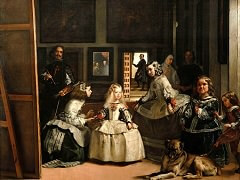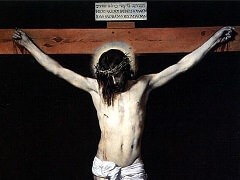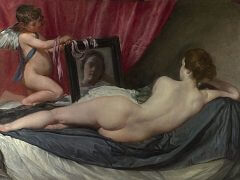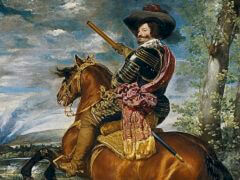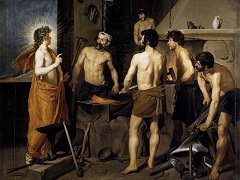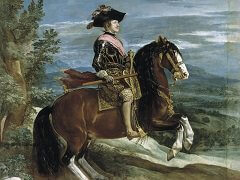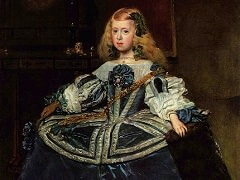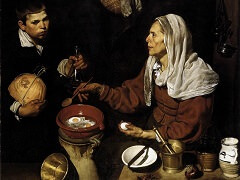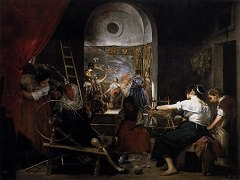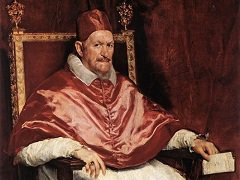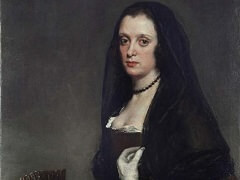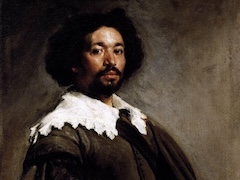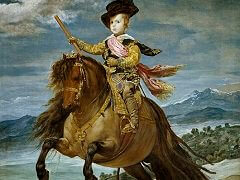The Buffoon Pablo de Valladolid, 1636 by Diego Velázquez

The excellent portrait of Pablo def Valladolid formed part of the series of jesters, along with the images of Cristóbal de Castaneda and The Buffoon Don Juan de Austria. It was probably painted for the Buen Retiro Palace around 1636. The occupation of this jester or actor consisted of entertaining the royal family, usually by enacting theatrical scenes as we can deduce from his declamatory stance and his very normal appearance. The most notable aspect is the lack of spatial references as there is no separating line between the floor and wall. Despite this, the figure has weight and is fixed to the floor; neither is he flat as Velázquez uses shadows to create a sense of volume. This formula was later applied by Edouard Manet in his painting Le Fifre. Pablillos is wearing a black costume, with a white ruff and cuffs, in accordance with men's fashions of the time. The free brushwork used in Velázquez's paintings from the 1630s is quite apparent here making it one of the artist's most advanced works and a reference point for Impressionism.

